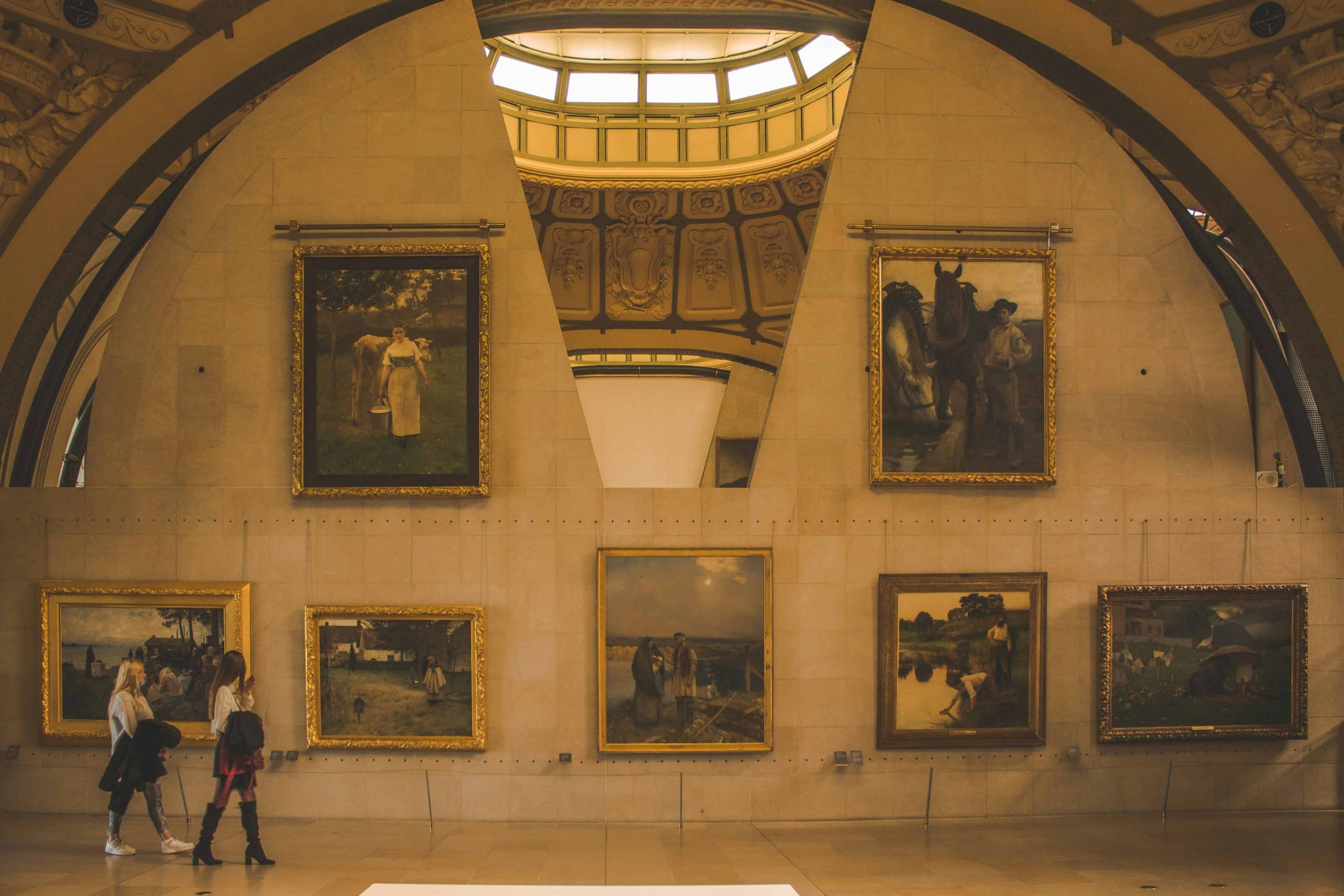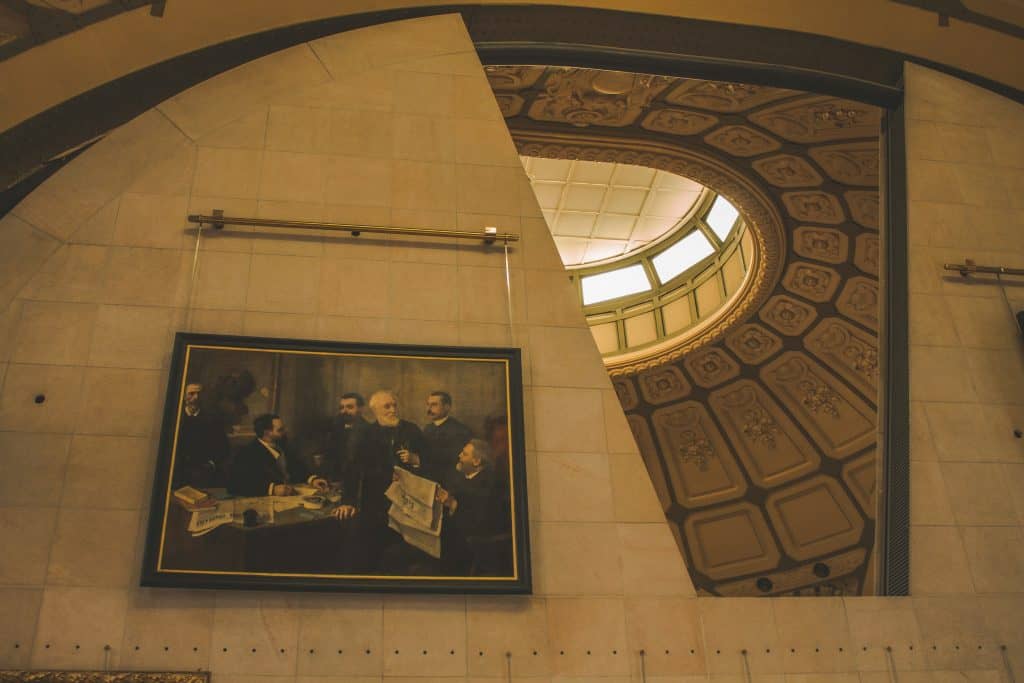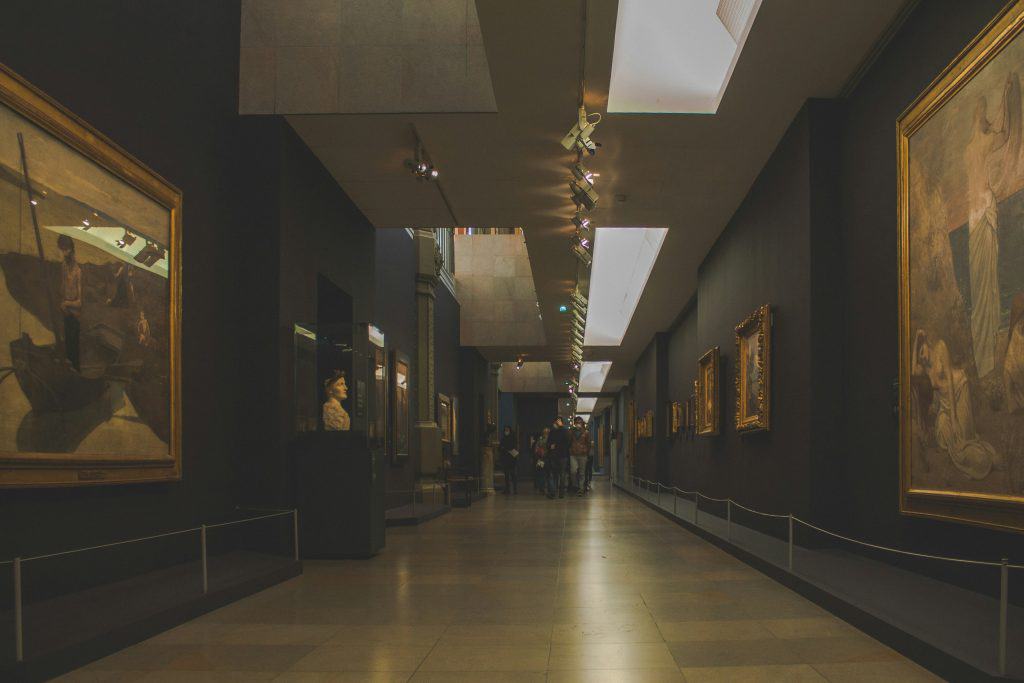
17 Feb Thematic Curation of Art Collections
Art curation, once confined to traditional chronological methods, has undergone a transformative evolution, with thematic curation emerging as a dynamic and compelling alternative. Unlike its conventional counterpart, thematic curation transcends mere temporal arrangement, instead weaving a rich tapestry of meaning and connection through the organization of artworks around central concepts, motifs, or ideas. This approach not only invites audiences to explore art through a fresh and nuanced lens but also challenges artists to engage with their work in more profound and multifaceted ways. As thematic curation continues to gain prominence in the art world, it heralds a new era of curatorial practice characterized by innovation, insight, and the boundless exploration of human expression.
Choosing a Theme for Your Collection

Photo by Diane Picchiottino
Consider various sources of inspiration
Thematic curation relies heavily on selecting a compelling theme as the foundation for the entire collection. Curators draw inspiration from a multitude of sources, including historical events, philosophical concepts, artistic movements, emotions, and environmental issues, providing a diverse range of narratives to explore. Historical events offer insights into the human experience across cultures and epochs, fostering connections between past and present. Philosophical themes encourage introspection and contemplation, while artistic movements spark innovation and expression. Emotion-driven themes delve into the complexities of the human psyche, while environmental themes prompt reflection on our relationship with the natural world.
Each thematic avenue offers unique opportunities for exploration and engagement. From historical narratives to philosophical inquiries, artistic expressions, emotional landscapes, and environmental concerns, thematic curation invites viewers to ponder universal truths, confront pressing issues, and appreciate the interconnectedness of human experiences within broader contexts. Through thoughtful selection and curation, exhibitions can inspire dialogue, provoke thought, and foster a deeper understanding of the world around us.
Evaluate different themes based on
A number of important aspects influence an exhibition’s efficacy and audience resonance when choosing topics. A theme must be in line with the curatorial vision and objective and have a significant bearing on the collection’s overall story. Themes should also promote a range of viewpoints and deep discussion among visitors, providing a number of levels for interpretation and investigation to enhance the exhibition experience. Coherence within the theme is essential for providing a unified framework that ties together the various elements of the collection, guiding viewers through a seamless narrative flow. Furthermore, understanding the demographics, preferences, and expectations of the target audience ensures that the chosen theme resonates with their sensibilities and interests, thus enhancing engagement and connection.
A carefully chosen theme serves as the cornerstone of a captivating exhibition, fostering exploration, interpretation, and reflection. By drawing inspiration from diverse sources and assessing themes based on relevance, interpretation, coherence, and appeal, curators can create immersive experiences that deeply resonate with viewers and leave a lasting impact.
Curating by Themes: Practical Approaches

Photo by Diane Picchiottino
Identify key artworks that embody the chosen theme
In identifying key artworks that embody the chosen theme, it is essential to delve into a comprehensive exploration across styles, mediums, periods, and geographical origins. By casting a wide net, one can uncover diverse pieces that contribute to a rich tapestry of artistic expression. Whether examining Renaissance masterpieces, contemporary installations, or indigenous art forms, the goal is to identify connections that transcend temporal and spatial boundaries. These connections may manifest through shared subject matter, symbolism, or emotional resonance, thereby facilitating the construction of a cohesive thematic narrative that resonates with viewers.
Grouping and juxtaposing artworks for impact
When grouping and juxtaposing artworks for impact, curators wield a powerful tool in shaping the visitor experience. By strategically arranging pieces, they can establish dynamic dialogues between contrasting or complementary artworks, stimulating nuanced reflections and insights. Whether employing a chronological progression to trace the evolution of ideas or organizing thematic clusters to explore sub-themes, the exhibition design plays a pivotal role in guiding visitors through a journey of discovery and contemplation.
Enriching the visitor experience
To enrich the visitor experience further, curators must pay careful attention to the presentation and interpretation of artworks. Crafting compelling titles, descriptions, and wall texts not only provides essential context but also invites viewers into deeper engagement with the exhibited works. Moreover, integrating multimedia elements such as videos, soundscapes, or interactive installations adds layers of sensory immersion, transforming the exhibition space into a dynamic arena of exploration. By offering guided tours, workshops, or digital platforms for interactive exploration, curators foster active participation and dialogue, inviting visitors to become active contributors to the ongoing conversation surrounding the theme. Through these multifaceted approaches, curators strive to create immersive and enriching experiences that leave a lasting impact on visitors long after they have left the gallery walls.

Photo by Patrick Tomasso
Conclusion
Thematic curation revolutionizes art exhibitions by organizing artworks around central ideas rather than chronological order, offering fresh perspectives to both artists and audiences. It begins with selecting compelling themes inspired by historical events, philosophical concepts, or emotions, which serve as the foundation for captivating exhibitions. Through careful selection and arrangement of artworks, thematic curation creates cohesive narratives that encourage viewers to explore connections and contrasts between pieces.
Practical approaches to thematic curation involve identifying key artworks that embody the chosen theme and strategically grouping them to establish dialogue and provoke thought. Enriching the visitor experience with engaging titles, descriptive materials, and multimedia elements fosters active participation and offers new insights. Thematic curation reflects the evolving nature of artistic expression and interpretation, inviting audiences to engage with art in dynamic and meaningful ways.
Key Takeaways
Key Takeaways: | |
Choosing a Theme for Your Collection | Draw from historical events, philosophical concepts, emotions, etc. |
Evaluate themes based on relevance, coherence, and audience appeal. | |
Curating by Themes: Practical Approaches | Identify key artworks embodying the theme across styles, periods, and origins. |
Group and juxtapose artworks to create impactful exhibitions, using contrast or complementarity. | |
Enhance visitor experience with compelling titles, multimedia elements, and active engagement strategies. |
FAQs
What is thematic curation?
Thematic curation is a curatorial approach that revolves around organizing artworks based on central concepts or themes, providing viewers with a fresh perspective and engaging them in a cohesive narrative. By grouping artworks around common themes, thematic curation allows for deeper exploration and interpretation of artistic ideas and connections.
How do you choose a theme for a collection?
Choosing a theme for a collection involves considering a myriad of sources of inspiration, including historical events, philosophical concepts, artistic movements, emotions, or environmental issues. Evaluating potential themes requires assessing their relevance to the collection, their capacity for engaging interpretation, coherence, and appeal to the target audience. A thoughtful selection of a theme forms the foundation for a captivating exhibition, guiding the overall narrative and impact of the artworks on display.
How can thematic curation enrich the visitor experience?
Thematic curation enriches the visitor experience in several ways. Firstly, it involves crafting compelling titles, descriptions, and wall texts that help contextualize and deepen the viewer’s understanding of the artworks and their thematic connections. Additionally, thematic curation incorporates multimedia elements such as videos, soundscapes, or interactive installations, creating a multisensory experience that immerses visitors in the thematic exploration. Furthermore, thematic curation encourages active engagement through guided tours, workshops, or digital platforms, fostering dialogue and deeper connections between the artworks and the audience. Through these strategies, thematic curation transforms the passive viewing experience into an interactive and enriching encounter with art.
Consider how workshops, which act as dynamic centers for skill development, networking, and collaborative discovery within the creative world, may build thriving art communities and meaningful interaction through “Art Workshops as a Community Engagement Tool” guide.

